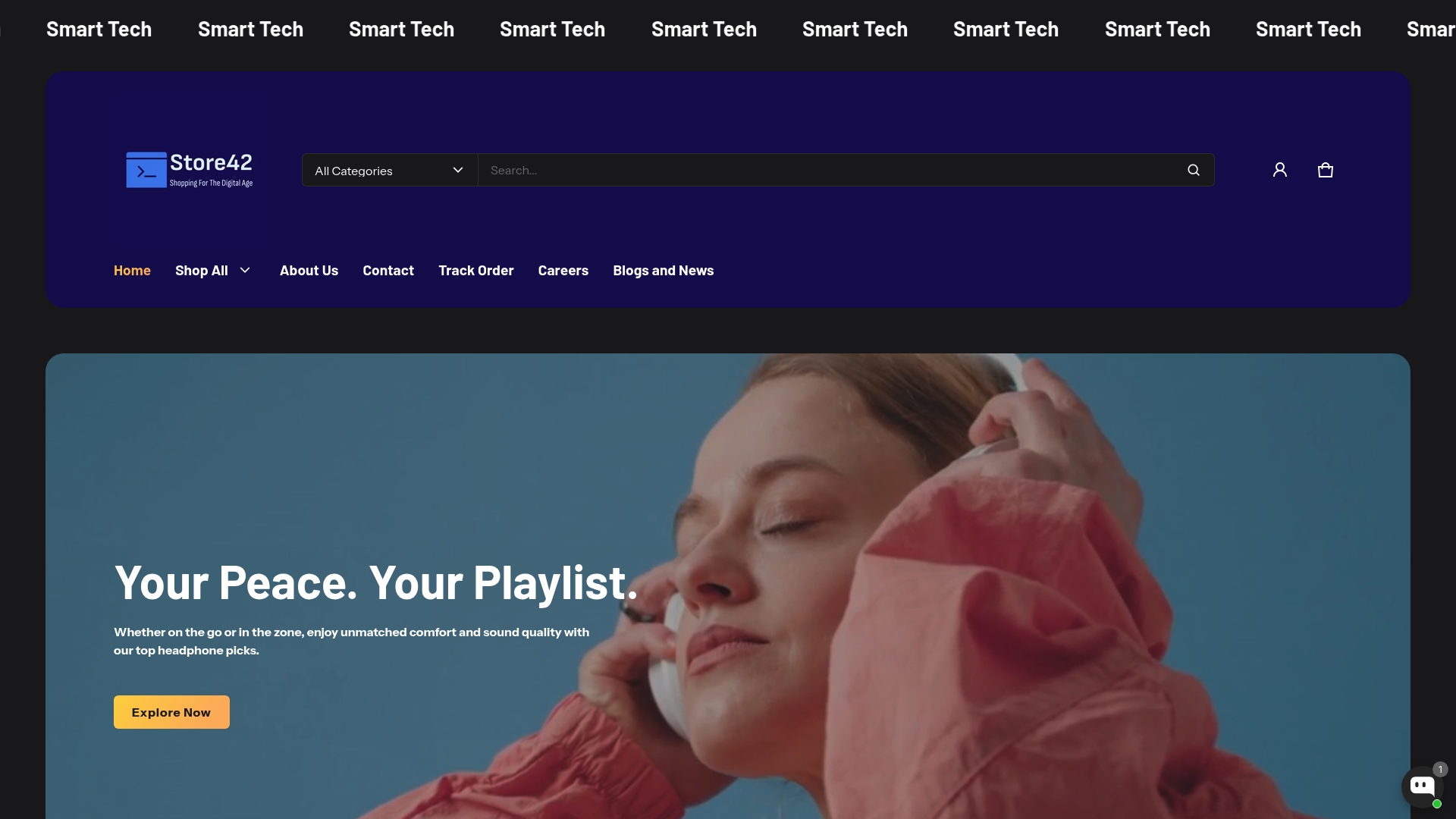Remote work is no longer just a trend for startups or freelancers. In 2023, nearly 28 percent of all U.S. employees worked remotely at least some of the time. That might sound like a massive technological shift, but there’s a bigger story here. The real surprise is how remote work tools are quietly transforming not just where people work but how entire companies communicate, measure progress, and build culture—no office required.
Table of Contents
- Defining Remote Work Tools: Key Concepts And Features
- The Importance Of Remote Work Tools In A Changing Work Landscape
- How Remote Work Tools Enhance Collaboration And Productivity
- Exploring Different Types Of Remote Work Tools And Their Functions
- Future Trends: The Evolving Role Of Remote Work Tools
Quick Summary
| Takeaway | Explanation |
|---|---|
| Leverage multiple communication modes | Use tools that allow video calls, instant messaging, and document sharing to enhance team interactions. |
| Adopt project management software | Implement platforms to track tasks, assign roles, and monitor progress efficiently. |
| Focus on secure file sharing | Utilize cloud storage solutions to ensure secure document exchange and centralized access. |
| Utilize performance tracking tools | Incorporate analytics to monitor productivity, identify bottlenecks, and support employee growth. |
| Embrace AI for workflow optimization | Integrate AI features for task prioritization and predictive performance analytics to enhance operational efficiency. |
Defining Remote Work Tools: Key Concepts and Features
Remote work tools represent technological solutions designed to facilitate seamless collaboration, communication, and productivity for distributed teams. These digital platforms and applications bridge geographical gaps, enabling professionals to work effectively from various locations. Dive deeper into remote work workflows to understand how modern technology transforms workplace dynamics.
Core Categories of Remote Work Tools
Remote work tools can be categorized into several essential functional groups that address different workplace requirements:
- Communication Platforms: Enable real-time messaging, video conferencing, and team collaboration
- Project Management Software: Help track tasks, assign responsibilities, and monitor progress
- File Sharing and Cloud Storage: Allow secure document exchange and centralized information storage
According to Cornell University’s research guide, these technological solutions are critical for maintaining organizational efficiency in distributed work environments. Each tool serves a specific purpose in recreating the collaborative experience traditionally found in physical office spaces.
Below is a comparison table summarizing the core categories of remote work tools and their main functions to clarify how each supports distributed teams.
| Category | Primary Function | Example Features |
|---|---|---|
| Communication Platforms | Facilitate real-time and asynchronous team communication | Video calls, instant messaging, team chat |
| Project Management Software | Track tasks, assign roles, and monitor project progress | Task boards, scheduling, progress tracking |
| File Sharing and Cloud Storage | Secure document exchange and centralized access | Cloud uploads, file permissions, version control |
| Performance Tracking Tools | Monitor productivity and support performance management | Analytics dashboards, reporting, KPI tracking |
| Collaboration Suites | Integrate multiple tools for teamwork in a unified workspace | Document co-editing, shared calendars, integrations |
![]()
Understanding Communication and Collaboration Dynamics
The role of remote work tools extends beyond simple task management. They fundamentally transform how teams interact and collaborate. The U.S. Office of Personnel Management highlights that these tools enable flexible work arrangements by providing technological infrastructure that supports professional communication.
Modern remote work tools integrate multiple communication modes, including synchronous interactions like video calls and asynchronous communication such as email and shared documents. This versatility allows team members to communicate effectively across different time zones and personal schedules, breaking traditional workplace constraints.
By leveraging sophisticated remote work tools, organizations can create dynamic, flexible work environments that prioritize productivity, collaboration, and employee satisfaction.
The Importance of Remote Work Tools in a Changing Work Landscape
The global workplace is undergoing a profound transformation, with remote work tools emerging as critical enablers of modern organizational effectiveness. Learn more about the rising trends in remote work that are reshaping professional environments worldwide.
Driving Organizational Adaptability
Remote work tools represent more than technological solutions they are strategic assets that empower businesses to remain competitive and resilient. According to Harvard Business School research, these tools allow companies to transcend traditional geographical limitations and access global talent pools.
Key advantages of implementing robust remote work tools include:
- Enhanced Talent Acquisition: Ability to recruit professionals regardless of physical location
- Increased Operational Flexibility: Scalable infrastructure supporting diverse work arrangements
- Reduced Operational Costs: Minimized expenses related to physical office maintenance
Technological Infrastructure for Modern Collaboration
Modern remote work tools go beyond simple communication platforms. They create comprehensive ecosystems that integrate multiple functions such as project management, real-time collaboration, secure data sharing, and performance tracking. These integrated systems ensure that distributed teams can maintain high productivity levels while preserving organizational culture and communication standards.
The technological infrastructure supporting remote work enables professionals to work seamlessly across different time zones, personal schedules, and geographic boundaries. By providing sophisticated digital environments, organizations can foster innovation, maintain team cohesion, and support individual employee preferences for flexible work arrangements.
As workplace dynamics continue evolving, remote work tools will remain pivotal in creating adaptive, efficient, and employee-centric organizational structures that can quickly respond to changing business landscapes.
How Remote Work Tools Enhance Collaboration and Productivity
Remote work tools have fundamentally transformed how teams communicate, collaborate, and maintain productivity across diverse work environments. Learn how to master your workspace transition and maximize the potential of these innovative technologies.
Communication and Real-Time Collaboration
Advanced remote work tools create seamless communication channels that transcend physical boundaries. According to Stanford University’s research, these platforms enable instant messaging, video conferencing, and collaborative document editing, effectively recreating the interactive dynamics of traditional office spaces.
Key features that drive enhanced collaboration include:
- Synchronized Document Editing: Multiple team members can simultaneously work on shared documents
- Instant Messaging: Real-time communication that mimics in-person interactions
- Video Conference Capabilities: Face-to-face meetings without geographical constraints
Productivity Tracking and Performance Management
Modern remote work tools go beyond simple communication. They integrate sophisticated performance tracking mechanisms that help organizations monitor team productivity, set clear objectives, and maintain accountability. These systems provide transparent insights into individual and collective work progress, enabling managers to make data-driven decisions and support employee development.
By leveraging intelligent dashboards and analytics, companies can:
- Identify potential workflow bottlenecks
- Recognize high-performing team members
- Allocate resources more effectively
- Maintain consistent performance standards across distributed teams
These technological solutions represent more than mere communication platforms they are comprehensive ecosystems designed to optimize collaborative potential and drive organizational efficiency in an increasingly digital workplace.
Exploring Different Types of Remote Work Tools and Their Functions
Remote work tools represent a diverse ecosystem of technological solutions designed to support distributed teams across various operational needs. Understanding these tools requires a nuanced examination of their specific functions and strategic applications in modern workplace environments.
Communication and Collaboration Platforms
Communication platforms form the foundational infrastructure of remote work ecosystems. Discover more about transitioning to remote workflows and understanding their critical role in organizational communication. According to National Academies of Sciences research, these platforms can be categorized into several critical functional groups:
- Synchronous Communication Tools: Enable real-time interactions like video conferences and live chat
- Asynchronous Communication Platforms: Support delayed interactions through email, recorded video messages, and shared documents
- Integrated Communication Suites: Combine multiple communication channels within a single interface
Project Management and Workflow Tools
Beyond communication, remote work tools encompass sophisticated project management solutions that enable teams to track progress, assign tasks, and maintain organizational efficiency. These platforms provide visual dashboards, task tracking mechanisms, and collaborative workspaces that simulate the coordination traditionally achieved through in-person meetings.
This table outlines key features of advanced project management and workflow tools as described in the article, offering a clearer view of their capabilities.
| Feature | Description |
|---|---|
| Task Assignment | Assign tasks to individuals or teams with clear responsibilities |
| Progress Monitoring | Monitor work advancement in real time through visual dashboards |
| Resource Allocation | Distribute workloads and resources efficiently across projects |
| Automated Reporting | Generate reports on project status, timelines, and bottlenecks |
| Performance Analytics | Analyze team and individual productivity using integrated metrics |
Key features of advanced project management tools include:
- Granular task assignment and tracking capabilities
- Real-time progress monitoring
- Resource allocation and workload management
- Automated reporting and performance analytics
The evolution of these tools demonstrates a profound shift from traditional hierarchical management structures to more flexible, transparent, and collaborative work environments.
 By providing comprehensive visibility into team dynamics and individual contributions, these technological solutions empower organizations to maintain productivity and foster a culture of accountability across distributed teams.
By providing comprehensive visibility into team dynamics and individual contributions, these technological solutions empower organizations to maintain productivity and foster a culture of accountability across distributed teams.
Future Trends: The Evolving Role of Remote Work Tools
The landscape of remote work continues to transform rapidly, with technological innovations reshaping how organizations approach distributed workforce management. Master your workspace transition to stay ahead of emerging workplace trends.
Artificial Intelligence and Automation Integration
According to Brookings Institution research, artificial intelligence is poised to revolutionize remote work tools by introducing more sophisticated capabilities that extend beyond traditional communication and collaboration platforms.
Emerging AI-driven features will likely include:
- Intelligent Task Prioritization: Automated systems that optimize workflow and task management
- Predictive Performance Analytics: Advanced algorithms that forecast team productivity and potential bottlenecks
- Smart Collaboration Recommendations: AI-powered suggestions for team interactions and project assignments
Hybrid Work Environment Technologies
The future of remote work tools is intrinsically linked to the development of hybrid work models that seamlessly blend physical and digital workplace experiences. These advanced technologies will focus on creating more immersive, inclusive, and flexible work environments that transcend traditional geographical and technological limitations.
Key technological developments in hybrid work tools will likely emphasize:
- Enhanced virtual reality collaboration platforms
- Context-aware communication systems
- Sophisticated cybersecurity solutions for distributed teams
- Personalized workspace optimization technologies
As organizations continue to embrace flexible work arrangements, remote work tools will evolve from simple communication platforms to comprehensive ecosystem management solutions that prioritize employee experience, organizational productivity, and technological innovation.
Elevate Your Remote Work Experience with Smart Solutions
Struggling to keep productivity high and collaboration seamless while working remotely? The article highlights how essential the right remote work tools are for keeping teams connected, boosting performance and overcoming the challenges of distributed work. Whether you face issues like unreliable video calls, power shortages on the go, or simply want to upgrade your digital workspace, the right accessories make a true difference in your daily workflow.

Explore best-in-class gear and tech essentials designed for modern nomads and remote professionals at Store42.co. Discover top tech accessories and components and portable power banks for ultimate on-the-go charging that help you stay productive anywhere. Shop now to ensure you, your team and your workspace are fully equipped for the future of remote work.
Frequently Asked Questions
What are remote work tools?
Remote work tools are technological solutions designed to facilitate collaboration, communication, and productivity for distributed teams, allowing professionals to work effectively from various locations.
What types of remote work tools are essential for effective collaboration?
Essential remote work tools include communication platforms for real-time messaging and video conferencing, project management software for task tracking and progress monitoring, and file sharing solutions for secure document exchange.
How do remote work tools enhance team productivity?
Remote work tools enhance productivity by providing a flexible communication infrastructure, integrating performance tracking, and allowing for seamless collaboration across different time zones and personal schedules.
What future trends are expected in remote work tools?
Future trends include the integration of artificial intelligence for improved task management and predictive analytics, as well as the development of hybrid work technologies that create immersive and flexible work environments.

